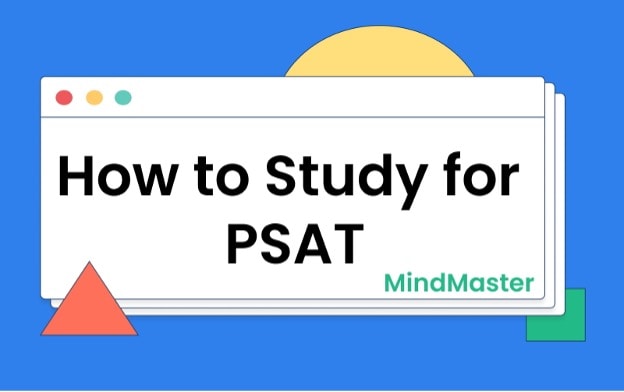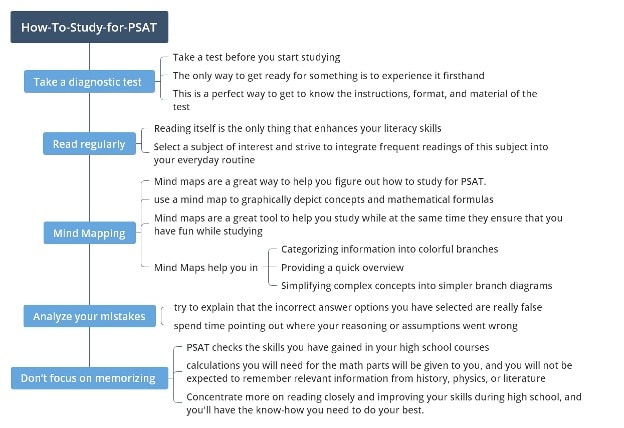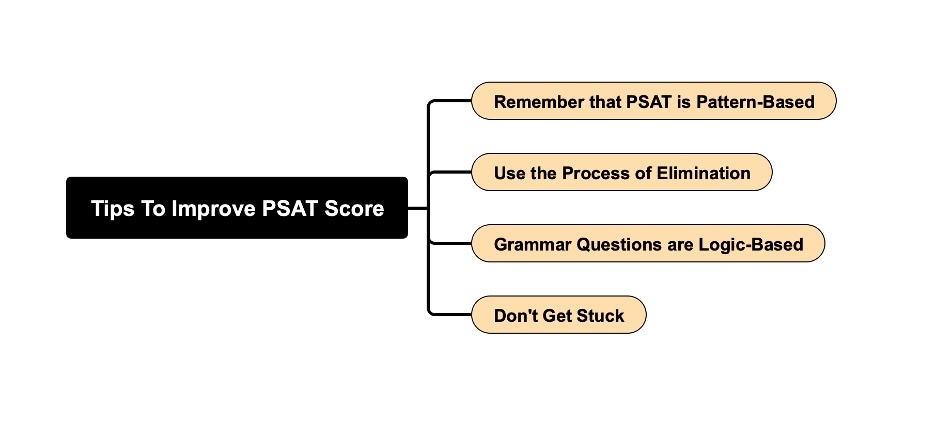
In this article
What Is the PSAT Test
PSAT is a precursor to the 10th and 11th graders in the SAT. While this test is not as critical as the SAT, performing well can open up some opportunities.
According to the College Board, administrators of the PSAT, the best way to study is to take challenging coursework and learn the curriculum. Besides your coursework, you can review and understand the primary content and function of the PSAT.
It is intended to prepare students to take the SAT by simulating a shorter version of the exam, introducing them to appropriate test content, and showing where they need to change to meet their target score.
The Sections in The PSAT Test
The PSAT is a 2-hour and 45-minute test with a total of 139 questions. The questions are grouped into three subject sections: mathematics, reading, writing, and language.
- Reading Section: The reading segment requires you to read, interpret, and respond to multiple-choice questions about the passages and informational graphics.
- Writing and Language Section: The writing segment tests the comprehension of correct grammar and English by multiple-choice questions that enable you to revise and enhance written passages.
- Maths Section: The math section contains multiple-choice and grid-in problems addressing logic, problem-solving, and data analysis. You are permitted to use a calculator for some questions.

Comparison of PSAT and SAT
The PSAT is essentially an SAT with less daunting intent (it might get you scholarships, but it doesn't get you into college). There are occurrences of SAT themes. The difference is the higher-level material, particularly in math.
It has the same form of questions as the SAT, with the same instructions, and the spacing for each segment is somewhat close.
There are, however, a few significant variations in length, ranking, and quality between them. Take a look at the comparison table given below.
| SAT | PSAT | |
| Total Length | 3 hours (or 3 hours and 50 minutes with the optional essay) | 2 hours and 45 minutes |
| Difficulty Level | Comparatively, SAT is more difficult | Compared to SAT, PSAT is slightly easier |
| Admission to College | Yes, SAT Scores are important for college admissions | No, PSAT scores are not a college admissions factor |
Why Should You Prepare for the PSAT
The PSAT is a gateway to the SAT. Since the primary purpose of the PSAT is to train you for the SAT (hence its name, "Preliminary SAT"), the two measures have many similarities.
As a result, planning for PSAT will give you an early understanding of the SAT material areas you need to improve and what techniques and methods fit well for you.
Your PSAT score will predict your SAT score. While the PSAT and SAT score scales vary, the PSAT score corresponds directly to the SAT score.
The easiest way to study for the PSAT is to have the bigger goal of scoring well on the SATs.
How To Study for the PSAT
There are five tips to guide you in studying for the PSAT. It will be helpful if you follow one of them.

Take a Diagnostic Test
Take a test before you start studying. The only way to get ready for something is to experience it firsthand. It is a perfect way to get to know the test’s instructions, format, and material.
You should also consider practicing the subject problems if you find you need more practice with a particular form of a question.
Read Regularly
If you're not a regular reader, you need to start reading as soon as you can.
Students who do not consistently develop and enhance their reading skills tend to have more problems with the PSAT and SAT Reading, Writing, and Language sections and are less likely to improve their reading scores in these classes.
Reading itself is the only thing that enhances your literacy skills. Select a subject of interest and strive to integrate frequent readings of this subject into your everyday routine.
Spending 15-20 minutes a day reading a book, newspaper, magazine, internet post, or other literature media will significantly improve your comprehension, speed, and retention — all skills that are key to achieving higher reading and writing, and language scores.
Use Mind Maps
Mind maps are a great way to help you figure out how to study for the PSAT. Wondershare EdrawMind is intuitive software that enables you to create visually appealing mind maps.
You can use a mind map to depict concepts and mathematical formulas graphically.
Mind maps are a great tool to help you study and ensure you have fun while learning. Mind Maps help you:
- Categorizing information into colorful branches;
- Providing a quick overview;
- Simplifying complex concepts into more detailed branch diagrams.
Analyze Your Mistakes
When you study, try to explain why the incorrect answer options you have selected. Understand why a choice is wrong. Doing this will ensure that you go over all the practice exercises and questions for PSAT preparation.
When you mark out the incorrect answers and spend time understanding where your reasoning or assumptions went wrong, you will increase your scores.
Bonus Tip: Remember to see if there are patterns in the errors. Recognizing your mistakes and realizing how to correct them helps you avoid making the same errors on the PSAT.
Don’t Focus on Memorizing
The PSAT checks the skills you have gained in your high school subjects. Any calculations or formulas in the math parts are included in the daily lessons.
It will not be expected to remember relevant information from history, physics, or literature. The exam is conducted to test your comprehension and literacy skills.
The exam aims to gauge your reading comprehension skills, English grammar and structure, and Maths through algebra II; your PSAT scores will also provide a reasonable approximation of your baseline SAT score.
Concentrate more on reading closely and improving your skills during high school, and you'll know what you need to do to deliver your best.
Don’t memorize concepts; instead, try to get to the roots of an idea. Doing this will help you retain information better.
Roadmap of Preparing for the PSAT
For your guidance, here’s a sample roadmap that you can follow as you prepare for the PSAT. This is just a standard template, however, and you can change it in accordance with your needs.
Remember that the PSAT is just preliminary to the SAT, and therefore, you can even include the PSAT as part of your SAT roadmap if you plan to make a roadmap for the latter.
Stage 1: Understand the Exam Structure
The first step is knowing what you’re about to face. PSAT’s structure involves Reading, Writing, Language, and Math. It’s a good idea to allocate the next steps accordingly based on this structure.
Stage 2: Gather Study Materials
The next section will provide several resource recommendations you can use. However, since PSAT is basically a test of your high school knowledge, it’s best to rely on what you’ve learned over the past years.
Stage 3: Build Core Skills
Focus on grammar rules, reading comprehension, and algebra, as they constitute a significant portion of the test. For example, review comma usage for Writing or practice linear equations for Math.
Strengthening basics first will make advanced practice easier for Stage 4. After all, repetition is what builds knowledge and confidence.
Stage 4: Take Practice Tests Under Timed Conditions
Simulate the real test by setting a timer and working in one sitting. After finishing, review mistakes carefully. If you struggled in Reading passages but did well in Math, adjust your next study sessions to spend more time on Reading.
Stage 5: Refine Your Strategy
As test day gets closer, shift your focus from learning new material to improving pacing and accuracy. Practice skipping time-consuming questions and returning later. Build the stamina to stay sharp for the entire test.
Stage 6: Prepare for Test Day
The night before, gather your admission ticket, pencils, calculator, and ID. On the day itself, arrive early and well-rested. Stick to the pacing strategies you practiced.
Resource Recommendations for the PSAT
For Stage 2, as provided in the previous section, here are some resource recommendations that you can use. Remember that these are not exhaustive, but as you prepare for the PSAT, it can be smart to make use of these.

For Guides
Start with the Official PSAT/NMSQT Student Guide from the College Board. It explains the test format, question types, and scoring in detail. Prep books from Princeton Review and Kaplan also give structured practice with tips that match the exam’s style.
For Practice Tests
The best approach is to use official College Board practice tests, which mirror the real exam.
Khan Academy also partners with the College Board to provide free online practice tailored to your strengths and weaknesses. These tests help you learn timing and build endurance.
For Apps and Tools
Use digital flashcard platforms like Quizlet to review grammar rules, math formulas, and vocabulary. Time management apps such as Forest or Pomodoro timers can keep your study sessions focused.
For PDFs and Handouts
The College Board regularly shares free sample questions and practice PDFs. You can also find downloadable math formula sheets or grammar checklists online. These quick references are useful for last-minute revision before test day.
How To Boost Efficiency With Mind Maps
Studying for the PSAT involves managing a lot of material, from math formulas to reading strategies. A mind map can help you turn scattered notes into a clear, visual system.
Instead of flipping through pages, you’ll see how topics connect and where to focus your energy.
How To Properly Use Mind Maps for PSAT Preparation
For math, you can branch out formulas by category. Under each branch, add examples or problem types. For reading and writing, create branches for grammar rules, common question patterns, and vocabulary lists.
Mind maps also save time when revising. Before test day, you don’t need to reread everything—scan your map to refresh key points. This makes it easier to keep concepts organized in your memory and boosts confidence.
Use a Mind Mapping Tool
Using digital tools makes the process even smoother. EdrawMind, for example, lets you build structured maps for knowledge management.
You can rearrange topics, add color codes, and include images to make recall easier. Since it’s online, you can also update and expand your map as you learn.
Tips To Improve Your PSAT Score
As a sort of last-minute PSAT tips and hacks, here are some of them:
- Remember that PSAT is pattern-based. PSAT is about recognizing patterns in the different subjects. The simpler, more direct one is usually the correct answer – if you’re not sure.
- Use the process of elimination. This is a common test hack. Just eliminate the answers you’re sure are wrong, then guess away from the remaining ones. In PSAT, there’s no penalty for guessing.
- Grammar questions are logic-based. Grammar questions are usually based on logic, so they become objective. So if a statement sounds “weird,” that’s probably wrong.
- Don’t get stuck. Remember, don’t spend more than 60-90 seconds per question. Mark and move on, and just come back if time allows. If there’s no time, use the process of elimination method.
Key Takeaways
Since the PSAT score itself isn't going to affect your college admissions decisions, it's crucial to make a decent effort on the exam: this way, you'll feel better with the test-taking process, and you'll know where you are with your results.
Using your PSAT performance, you will be able to intelligently schedule your SAT planning, alleviate uncertainty, and increase your chances of success.
EdrawMind is an intuitive software and flexible mind mapping tool. It is designed to generate modern and visually appealing mind maps to learn how to study for the PSAT.
Combining various elements of your PSAT study into a mind map, EdrawMind lets you organize the ideas and concepts and create useful study mind maps.
FAQs
Before you go and prepare for PSAT, here are some FAQs, the answers to which you might appreciate as you begin:
-
1. How different is the PSAT from the SAT?
The PSAT tends to be easier than the actual SAT. Its questions are similar to the SAT, but you can expect it to be a bit easier. It is a practice for the SAT.
-
2. When should students start preparing for the PSAT?
As early as 11th grade, you should be starting your PSAT prep. This will give you enough time to review all the subjects. You’ll be preparing as you go through your high school subjects, too.
Thus, you should start as early as you can to get the most out of the PSAT and the experience of reviewing for it. The ending will be good scores for your SATs – and that means great colleges.
-
3. Does the PSAT score really matter for college admissions?
Colleges do not use PSAT scores directly. However, strong scores can qualify you for scholarships like National Merit, which can boost your application. Plus, PSAT prep directly helps with SAT readiness.
-
4. What are the hardest parts of the PSAT?
Many students struggle with time management. The math section’s no-calculator part is also tricky, especially with algebra questions. Reading passages can be dense, so practicing active reading is essential.
-
5. Are practice tests necessary for the PSAT?
Yes. Practice tests build familiarity with timing and question styles. Reviewing mistakes from these tests helps you identify weak areas. Free official practice tests are available online and are highly recommended.







